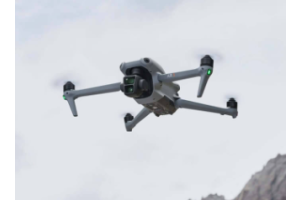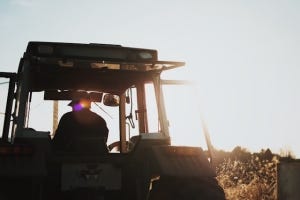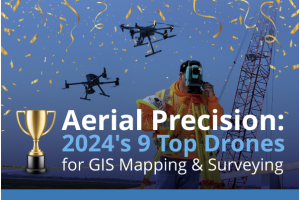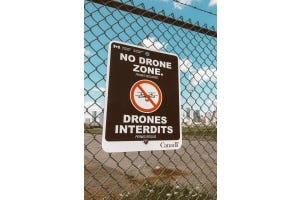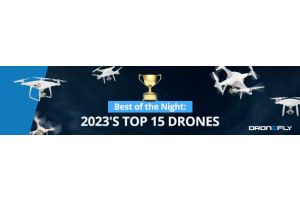Managing a farm is no small feat, and we know you've got a lot on your plate. From keeping track of your crops' health to making sure your yield is up to par, it can feel like you're always juggling a dozen tasks at once. And let's not forget about the unpredictable weather throwing curveballs your way. It's a lot, isn't it? But tech tools - specifically agriculture drones are here to lend you a hand. One core part of these drones is the camera they use. They work with different kinds of technology like RGB, Multispectral, and LIDAR. Which one best suits your farming needs? That's what we're looking at here.
RGB cameras are your go-to for high-quality images of your fields, just like the pictures you'd take with your smartphone, but from the drone's aerial view. They're great for getting a general sense of your crop's condition. But what if you want a deeper look into how your crops are performing - even data that is not visible to the naked eye? That's where Multispectral cameras come into play. These give you a detailed analysis by using images in specific wavelengths of light. And then there's LIDAR that's a powerful tool that uses laser light to map out your land in 3D, giving you invaluable information about the terrain and plant biomass.
Let's pick each one apart, and give you a clear picture of how you can use these drone cameras for farming to make your life a bit easier and your fields more productive.
Quick Overview: RGB vs. Multispectral vs. LiDAR For Your Agriculture Drone
| Imaging Technology | RGB Cameras | LiDAR (Light Detection and Ranging) | Multispectral Cameras |
|---|---|---|---|
| Technology | Capture images using the red, green, and blue light spectrum, similar to how human eyes perceive color. These cameras produce color images that are easy to interpret and useful for basic monitoring and visual inspection tasks. | Sensors emit laser beams to measure distances to the Earth's surface and generate precise three-dimensional information about the shape and surface characteristics of objects. | Capture light across several specific wavelengths beyond the visible spectrum, including infrared. Each band can provide different information about crop and soil health. |
| Applications | Used for general observation, such as monitoring crop growth stages, detecting plant diseases visually, and assessing overall crop health. They are also useful for creating marketing materials or conducting basic farm inspections. | Primarily used for creating high-resolution topographic maps and detailed 3D models of farmland. These maps can help in planning irrigation systems, land leveling, and understanding crop structure (e.g., canopy height). LiDAR can also assist in precision agriculture practices by enabling detailed terrain analysis for optimizing water usage and soil management. | Assessing plant health, soil properties, and moisture levels. It can be used for identifying pest and disease outbreaks, monitoring crop vigor through vegetation indices like NDVI (Normalized Difference Vegetation Index), and optimizing inputs such as water, fertilizers, and pesticides. Aid in precision agriculture, allowing farmers to apply inputs only where needed, reducing costs and environmental impact. |
| Limitations | Inability to capture information beyond what is visible to the naked eye. They do not provide detailed data on plant health, moisture levels, or nutrient content. | More expensive and complex than RGB or multispectral cameras. They do not provide direct information about crop health or color, focusing instead on structural and elevation data. | Capture fewer bands of the electromagnetic spectrum compared to hyperspectral cameras and may not detect all nuances of plant stress or disease. Additionally, interpreting multispectral images requires specialized knowledge and software. |
Detailed Breakdown Of Drone Camera Technology For Farms
RGB Cameras
RGB cameras use red, green, and blue light to take pictures that look a lot like what we see with our own eyes. This means you get really clear and colorful shots of your farm. The detail in these photos depends on the camera's spatial resolution - which dictates the level of detail captured and the operational altitude of the drone. Higher resolution allows you to fly your drone higher without compromising the granularity of captured images. For the lower resolution, the drone has to fly closer to the ground to get the same quality.
The principle behind RGB cameras lies in their ability to interpret the visible portion of the electromagnetic spectrum, ranging from 400 to 700 microns. However, they can't detect infrared or ultraviolet wavelengths.
Applications
As a farmer, here’s how RGB cameras mounted on drones can benefit you directly:
- Monitor Crop Growth and Health: Use RGB cameras to keep a close eye on your crops throughout their growth stages. These images help you spot visible signs of diseases, pest infestations, and other issues that could impact your yield.
- Create Orthomosaic Maps: Generate detailed, comprehensive maps of your land. These maps are invaluable for spotting planting gaps, stress in crops, and helping with resource management, irrigation planning, and targeted interventions to boost crop health and yield.
- Count plants and track crop emergence: This helps with managing your inventory, predicting yields, and evaluating the success of your planting strategies.
Plus RGB cameras helo you fine-tune your farming practices, giving a boost to your precision agriculture efforts. These cameras also serve broader purpose likes:
- Ecology and Land Use Mapping: They are instrumental in ecology for creating detailed vegetation maps and assessing species density. They also play a crucial role in land use and land cover (LULC) mapping, for resource management and environmental planning.
- Generate 3D Models: Researchers can create 3D digital surface models (DSMs) to assist in accurate habitat classification, crop yield prediction, and high-precision LULC extraction.
- Facilitate Thematic Mapping: When thematic mapping is based on the geometry of tree canopies captured in orthophotos it can predict crop yields. This technique, along with LULC mapping, benefits from the high-resolution imagery and drone mobility, makes RGB cameras a versatile tool for comprehensive environmental assessment and management.
Limitations
While RGB cameras on drones offer invaluable insights through high-resolution, color-accurate images, they rely only on the visible light spectrum, putting a cap on what you can achieve. This spectrum restriction means they can't detect information that lies beyond human vision, such as infrared or ultraviolet light, limiting their utility in applications requiring detailed analysis of plant health, moisture levels, or nutrient content. For instance, in precision agriculture, where understanding the subtle differences in crop health or detecting early signs of disease is crucial, RGB cameras fall short as they cannot capture the near-infrared light reflected by healthy vegetation, a key indicator of plant vigor not visible to the naked eye.
Moreover, the spatial resolution of RGB sensors, while sufficient for general observation, does not meet the needs of applications requiring ultra-fine detail or the ability to penetrate canopy cover to assess conditions beneath vegetation.
That's why you end up needing additional sensors, such as multispectral or hyperspectral cameras for more detailed data. You get this with drones like the DJI Mavic 3M, which features a Multispectral & RGB Imaging System.
Also Read: Farmer’s Toolkit: The Top 4 Drones For Crop Monitoring in 2024
LiDAR
It operates by emitting laser beams to measure the distance to the Earth's surface, creating precise, three-dimensional information about the landscape and the features on it. This technology combines high-precision laser scanners, the Global Positioning System (GPS), and Inertial Navigation Systems (INS) to achieve incredibly precise 3D mapping. It is notable for its ability to penetrate foliage and other obstructions, providing detailed topographical maps of landscapes that are otherwise difficult to survey. Unlike photogrammetry, which synthesizes data from a collection of photographs, LiDAR can directly provide 3D visualizations of areas, including those obscured by tree canopy or similar obstructions. This advancement over traditional aerial data collection methods, such as those requiring airplanes, marks a significant leap in accessibility and utility, making accurate surveying available to a broader range of projects
Applications
By generating high-resolution topographic maps and detailed 3D models, LiDAR supports different critical agricultural activities. Farmers can use these models for irrigation planning, land leveling, and to analyze crop structures, such as canopy height. The technology also plays a role in precision agriculture, aiding terrain analysis to optimize water usage and soil management. It enables the construction of levees in rice fields and measures crop progress, facilitating targeted fertilizer use. Additionally, LiDAR data assists in locating trees in orchards and understanding water flow, essential for managing natural variability in farms. From a management point of view, LiDAR supports efficient land use, essential for addressing the challenges posed by the growing global population and the consequent demand for increased agricultural productivity.
Limitations
It is generally more expensive and complex compared to other imaging technologies such as RGB or multispectral cameras. While LiDAR excels in providing structural and elevation data, it does not offer direct information on crop health or color – what farmers need for day-to-day use. As such, for full spectrucum agricultural data, you’ll need to use it with other sensing technologies. to provide a full spectrum of agricultural data. It's a more useful tool for Large-Scale Farmers and Agricultural Enterprises looking to create topographic maps and 3D models - like when planning large-scale irrigation systems, or consultants, engineers and other professionals pro viding an advisory or planning services. The choice between LiDAR and other technologies like photogrammetry depends on specific project requirements, such as the need to map areas under tree canopy or the scale of the survey area.
Check out their comparison here: LiDAR vs Photogrammetry
Multispectral Cameras
They use specialized imaging techniques to capture data across various spectral bands, including visible light and near-infrared (NIR) wavelengths. What does this mean for you? Well, these cameras can pick up on subtle changes in your crops’ colors and how they reflect light - these are your early warning signs for crop health and stress levels.
These high-tech cameras use advanced sensors to measure the intensity of light, turning what they 'see' into digital data. This data is then processed and analyzed using the integrated software, allowing you to visualize the health of your crops, the condition of the soil, water stress, and other parameters.
Applications
- Monitor Crop Health: You can use multispectral imaging on drones to keep an eye on the well-being of your crops. This technology helps in identifying any nutrient deficiencies, diseases, or pest infestations early on.
- Analyze Soil Properties: Understand what's going on under your crops. Knowing your soil's composition and quality helps keep your plants thriving.
- Manage Irrigation Efficiently: Identify which parts of your field need more (or less) water. This way, you're not wasting the precious resource, and your crops get exactly what they need.
- Predict Yields: With the help of multispectral imaging, you can predict the potential yield of your crops. This information enables you to make informed decisions regarding resource allocation.
- Assess Vegetation Health: You can use vegetation indices, such as the Normalized Difference Vegetation Index (NDVI) and the Normalized Difference Red Edge Index (NDRE), to get quantitative measures of your crops' health and chlorophyll content. These indices are vital for managing photosynthesis activity and planning the best time to harvest.
- Optimize Crop Rotation: By analyzing the comprehensive data provided by multispectral imaging, you can make better decisions about crop rotation, which helps in maintaining soil health and maximizing yield.
- Catch frost before it bites: Spot frost damage early so you can act fast to save your crops from harm.
- Manage Pest Outbreaks: Stay ahead of outbreaks by identifying infested areas early. This enables you to apply targeted treatments, keeping your plants safe.
With multispectral imaging, you're not just reacting to problems as they arise; you're proactively managing your farm. That way you can get the most out of your land while conserving resources.
Limitations
These cameras capture fewer bands of the electromagnetic spectrum compared to hyperspectral cameras. The latter can provide detailed images across a broad spectrum, from visible to near-infrared wavelengths, detecting fine material differences with complex data from hundreds of bands, making them more suited for scientific research. However, they are heavy and require drones with significant payload capacities. Multispectral cameras, capturing images in 3 to 10 specific spectral bands, offer simpler, easier-to-analyze data. They provide sufficient detail for agricultural tasks like monitoring crop health and water stress, making them more practical for everyday use.
However, there is a learning curve involved. Interpreting multispectral images requires specialized knowledge and software, which is an extra hoop for the farmer to jump through – knowing how to analyze the data and interpret vegetation indices. Access to adequate training or resources helps with this.



